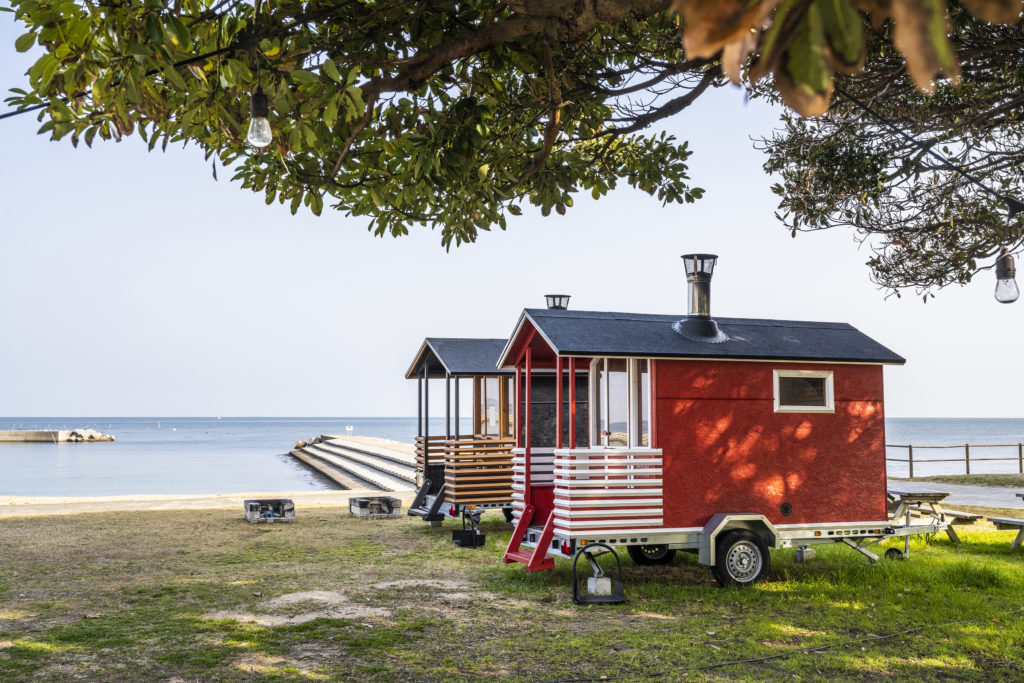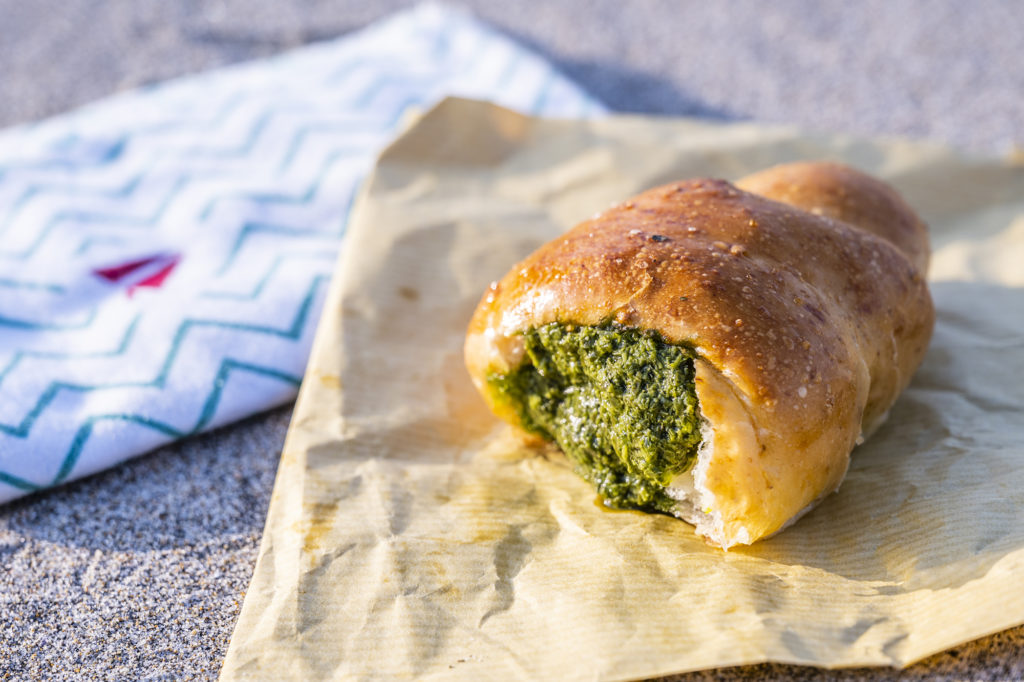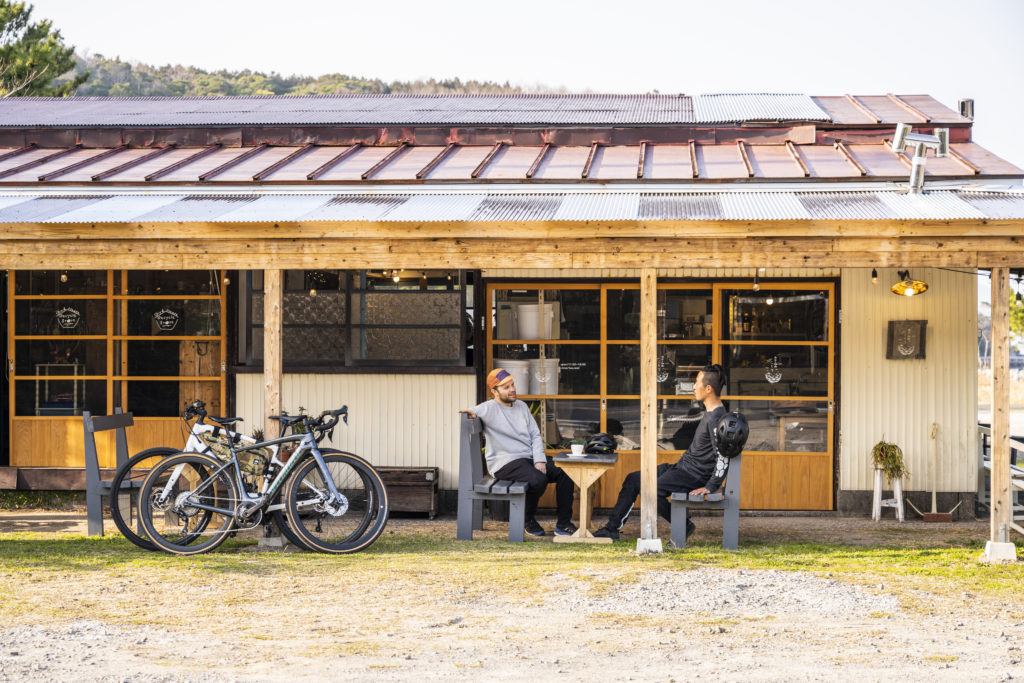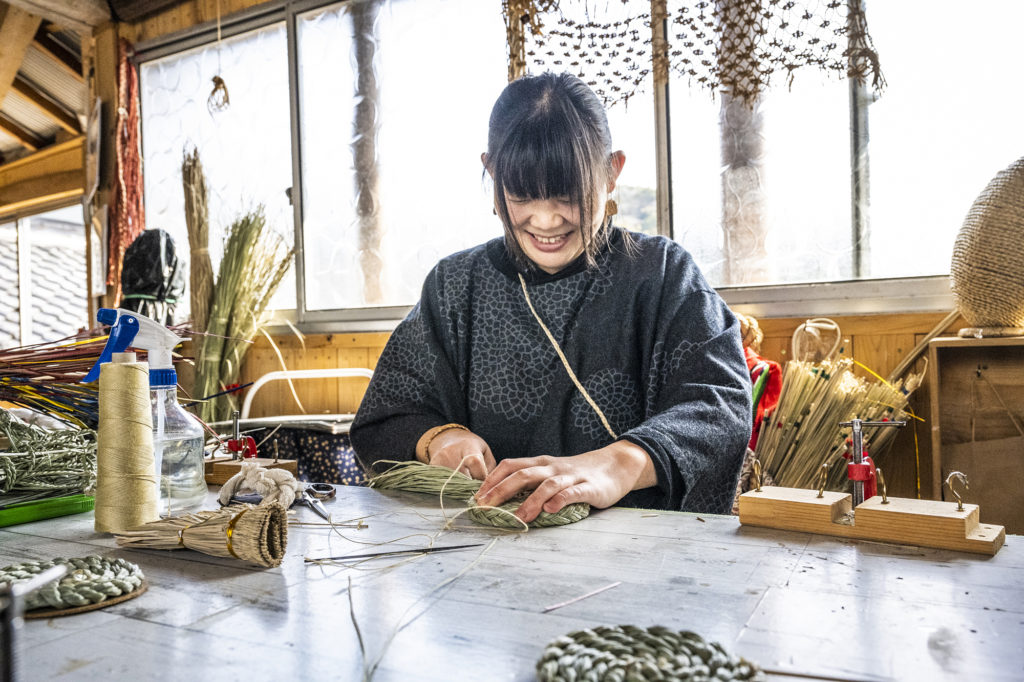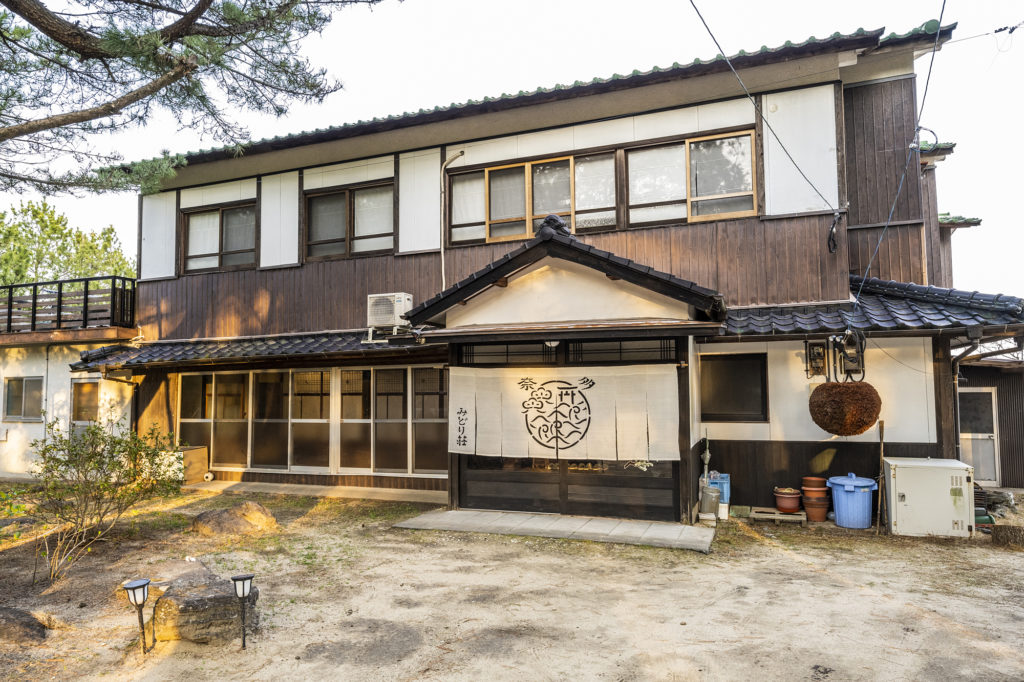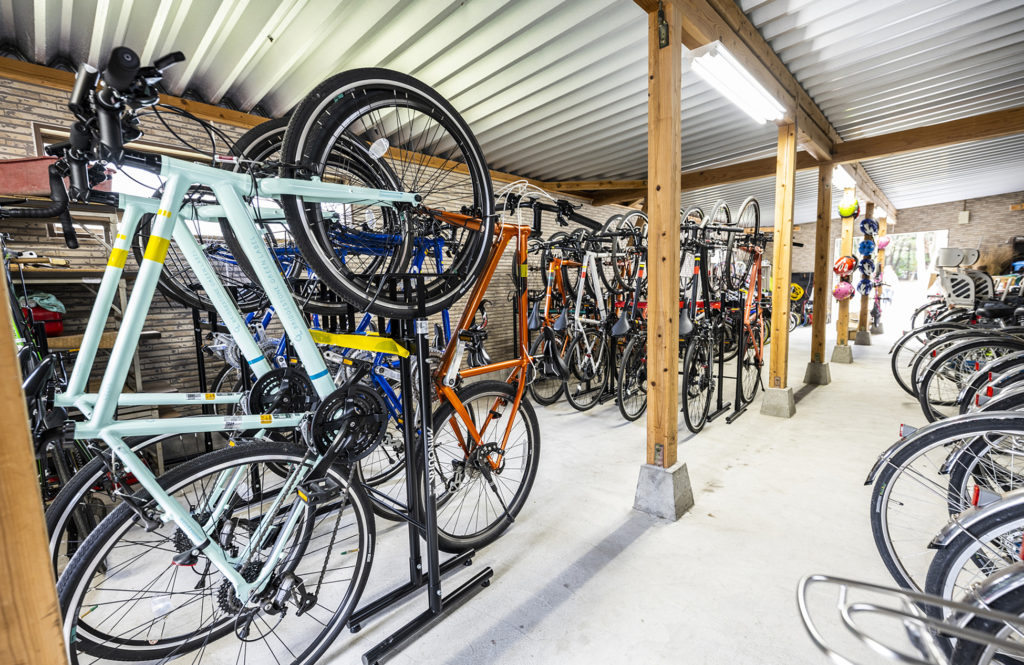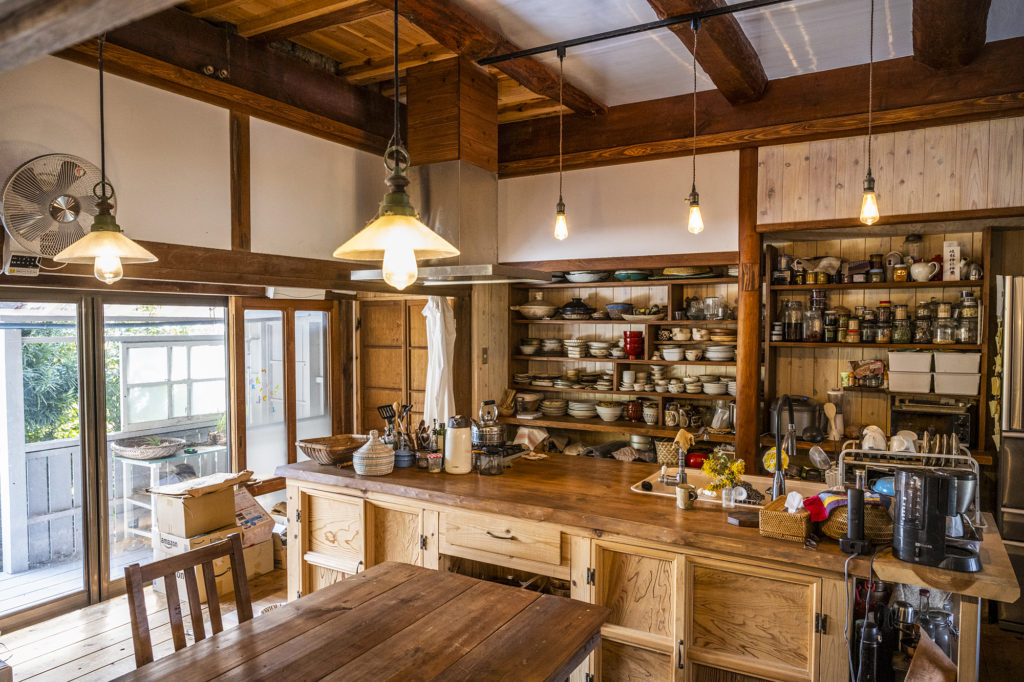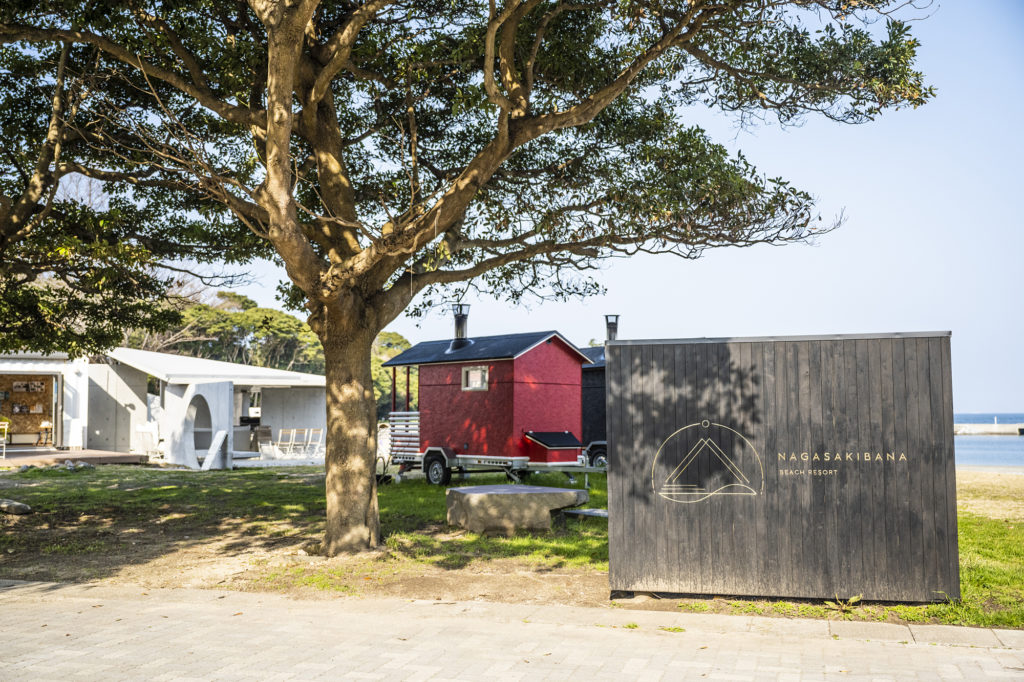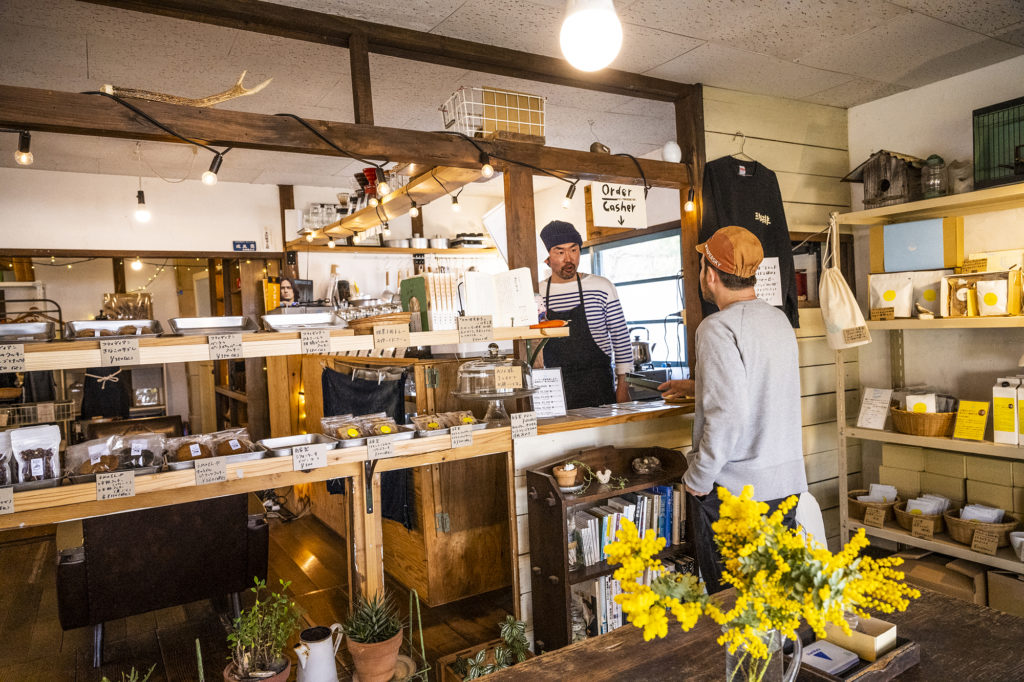Across the peninsula under the watch of Nio statues
The Kunisaki Peninsula is the birthplace of Rokugo Manzan, a distinctive religious culture blending ancient mountain worship and asceticism with devotion to the Shinto deity Hachiman, headed by Usa Jingu Shrine. The valley landscape is dotted with over 300 stone-carved Nio statues. These guardians of the Buddha are more concentrated here than anywhere else in Japan and serve as icons of the peninsula. In 2019, a total of nine cycle routes were established, named the Nio Rindo. Running through the picturesque coastline, the Mt. Futago area dense with the atmosphere of mountain worship, and the serene countryside praised for the unspoiled Japanese landscape, the courses offer everyone from novices to seasoned cyclists a taste of the local identity. For this bike packing journey, we rolled several routes of the Nio Rindo into one that makes a 120-kilometer-long half circle around the peninsula in two nights and three days.
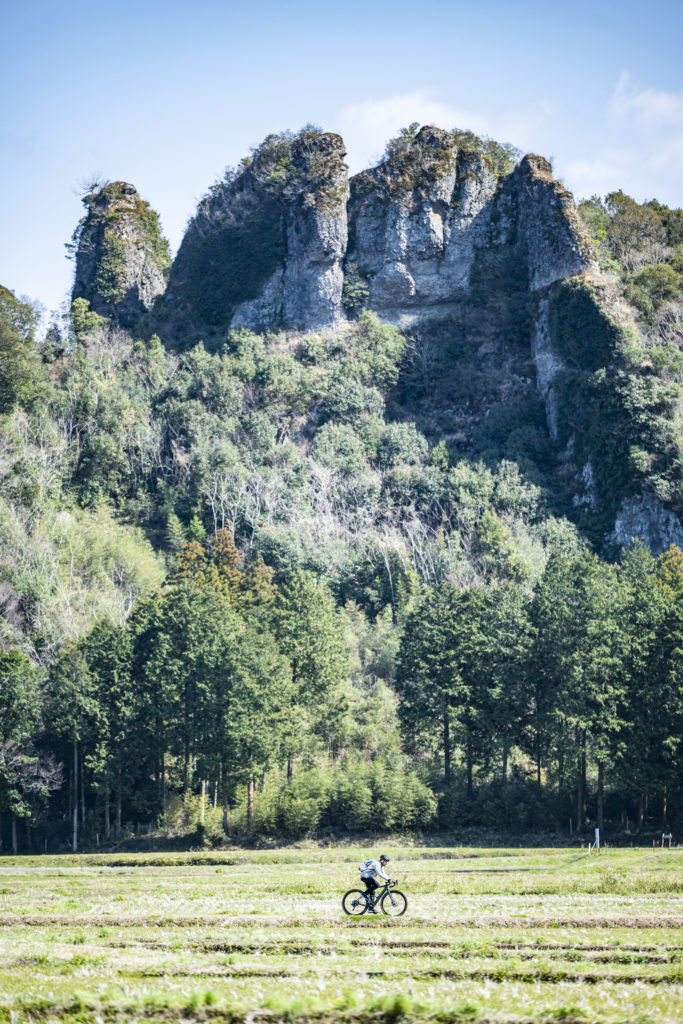
Our guide, photographer Tomohide Tani, was born and raised in Kunisaki. In recent years, he also serves as a local guide and a kataribe storyteller on Nio Rindo tours. Mr. Tani and Editor in Chief Lucas B.B. are old friends and made the perfect travel companions.
On day one, we embarked to experience Rokugo Manzan by following the inland route of the Gyokoe, the greatest Shinto ritual of Usa Jingu Shrine. We got on our Specialized e-Bikes and headed from Usa Jingu, on one side of the peninsula, toward Hachiman Nada Shrine, in Kitsuki City on the other side. Along the route appeared Tashibunosho, an immense stretch of rice fields established by Usa Jingu in the Heian period (784–1185). Later designated as a basic manor of Usa Jingu, the idyllic landscape remains intact to this day. From the tranquil paddies, we rode past the rock cave Buddhist carvings of Motomiya Magaibutsu and the steep rock formations of Sannomiya-no-kei to the highlight of the day—the slope to the 721-meter-tall Mt. Futago. Thanks to the e-Bikes, the climb felt flat and easy.
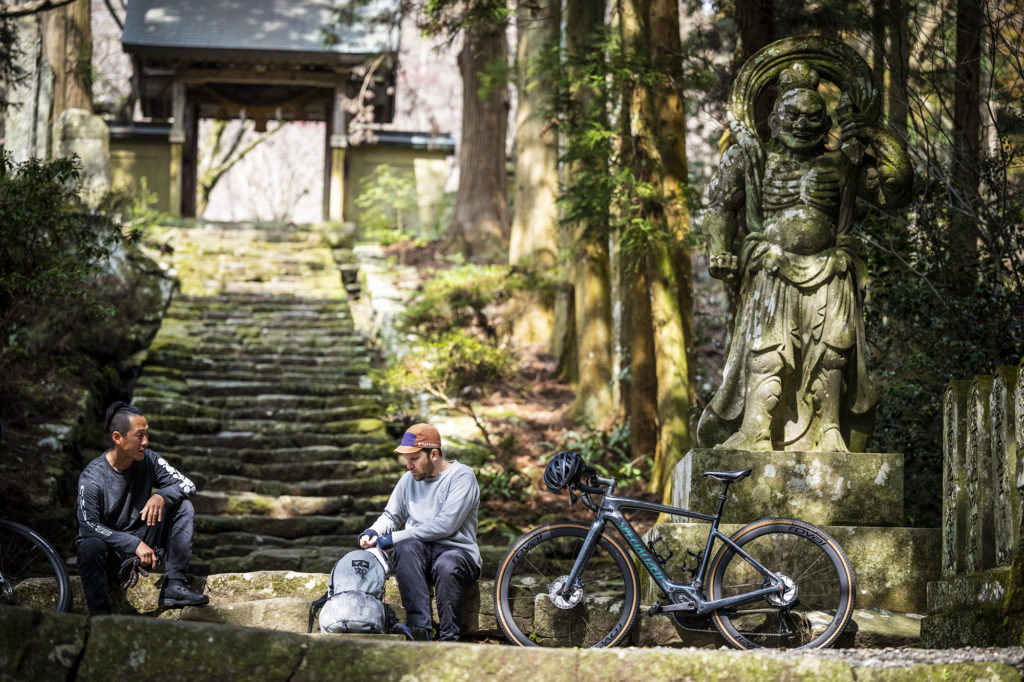
Gojun Terada, a priest at Futagoji Temple, shared his stories about the peninsula’s history, abundant water resources, and lifestyle closely associated with Rokugo Manzan. “The religion emerged in the Nara period (710–784), flourished in the Heian period (784–1185), and was nurtured and upheld by the people for as long as 1,300 years. The seasonal expressions of nature also add a feeling of ‘life.’ I believe religion and nature have given shape to the unique climate of Kunisaki.”
Mr. Terada’s pet project at the moment is the Futago Forest Project. His reforestation activities do not end there but aim to revitalize the local community and help pass down the legacy of the local tradition and culture.
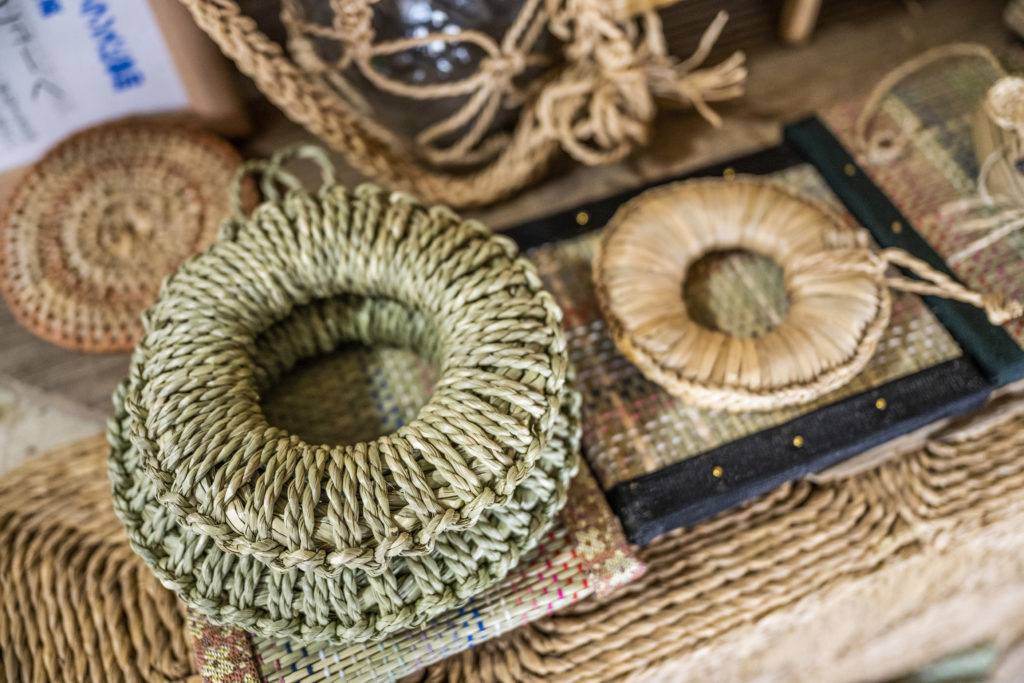
Shichito matgrass is a 360-year-old industry unique to the peninsula. Shichito is a remarkable material that ages well and is stronger than igusa rush grass traditionally used for tatami mats. But at present, it is grown by only a small number of farmers, and only in the Kunisaki Peninsula. Chika Iwakiri is an artisan who seeks to preserve the culture of shichito for posterity. We stopped by her studio, Nanatsumugi, and tried our hand at making shichito crafts.
In the evening, we arrived in Nada, in Kitsuki City, where we took a leisurely ride through the pine forest and visited Hachiman Nada Shrine. A torii gate appeared to be floating in the sea tinted pale pink by the twilight. We spent this night close to the shrine, at Nada Midoriso Beach House.
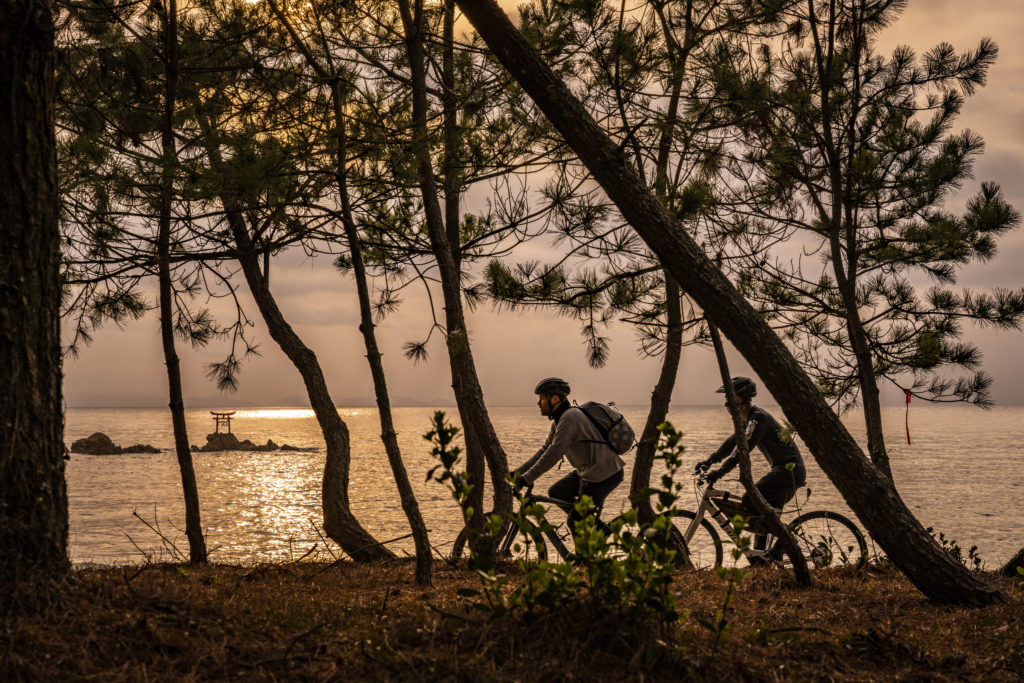
On day two, we exited the mountainous area and followed the balmy coastline to Cape Nagasakibana. At Kunisaki City Cycling Terminal, we met with Saya Kuroeda, a member of the professional racing team Sparkle Oita, based in Oita City. Mr. Kuroeda and his elder brother launched the local team with the hope of inspiring the residents and encouraging community exchange through cycling. Mr. Kuroeda says, “We want to promote exchange with the locals, increase the number of bicycle fans, foster a cycling culture, and compete on the world stage!”
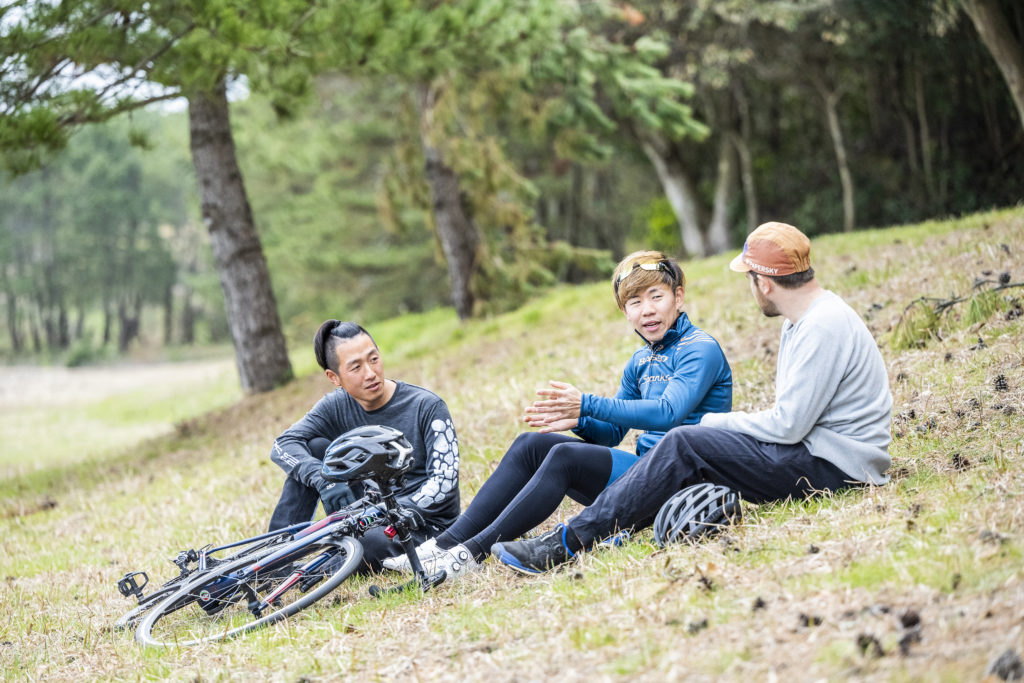
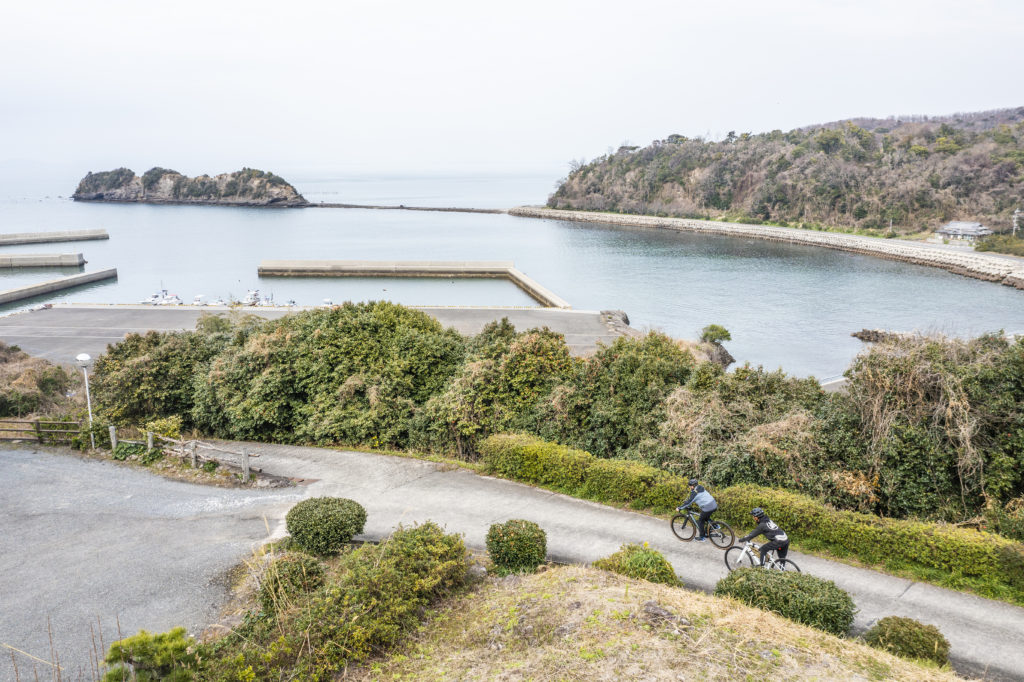
Simple and rustic, and therefore creative
“I want to show you a creative lifestyle unique to Kunisaki”—our guide, Mr. Tani, led us to a “hands-on guest house” named Norbulingka, in Kunimi. The owner, Hiroko Takei, moved here from Tokyo and now lives a life of near-complete self-sufficiency.
“I experienced a life of hunting and gathering on a remote island when I was younger. That taught me how fascinating it was to be resourceful and find clever everyday solutions. I always wanted to try it again. The Kunimi area of Kunisaki City is dubbed an onshore desert island. Even today, it’s alive with the rich nature that makes self-sufficiency possible and the close interpersonal connections that allow for barter-style swaps.”
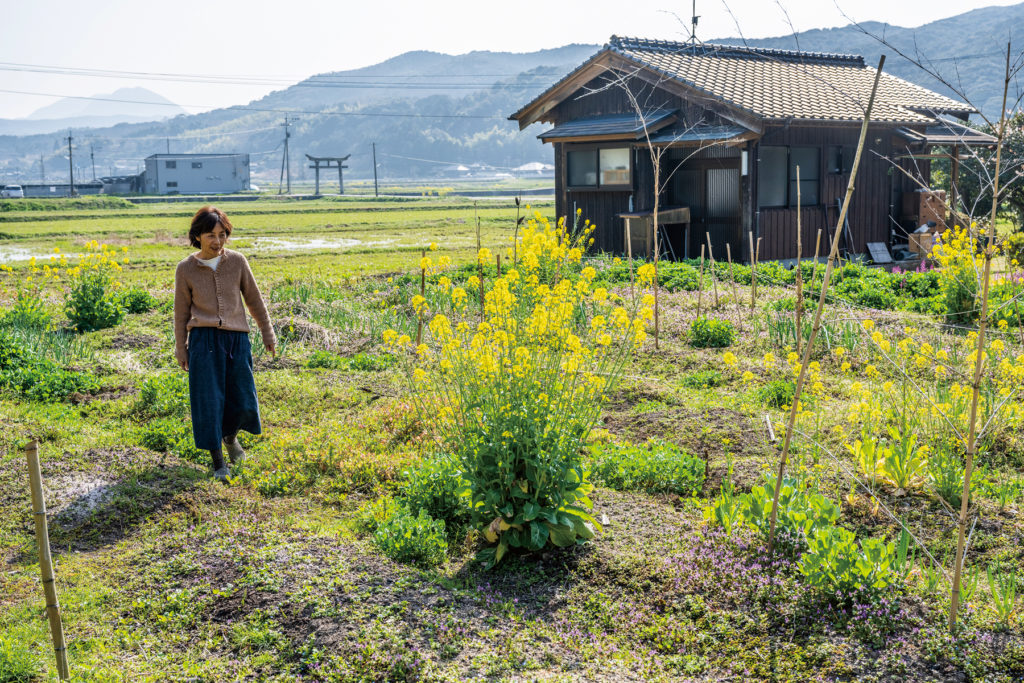
Ms. Takei says there is “a wealth of heartfelt happiness in ordinary scenes of life” in Kunimi. And to give back some of that happiness, she organizes community support activities. Her new website Kunisaki Life, for instance, shares the charms of Kunisaki while aiming to promote mutual support and sustain the rewarding community lifestyle.
Our goal on this day was the Nagasakibana Beach Resort, in Cape Nagasakibana. We settled into a camping car and listened to the sound of the waves as we recalled the unique people, crafts, and food culture that we encountered in the Kunisaki Peninsula. Tomorrow is the last day. Our destination, Usa Jingu Shrine, is only a short pedal away.
